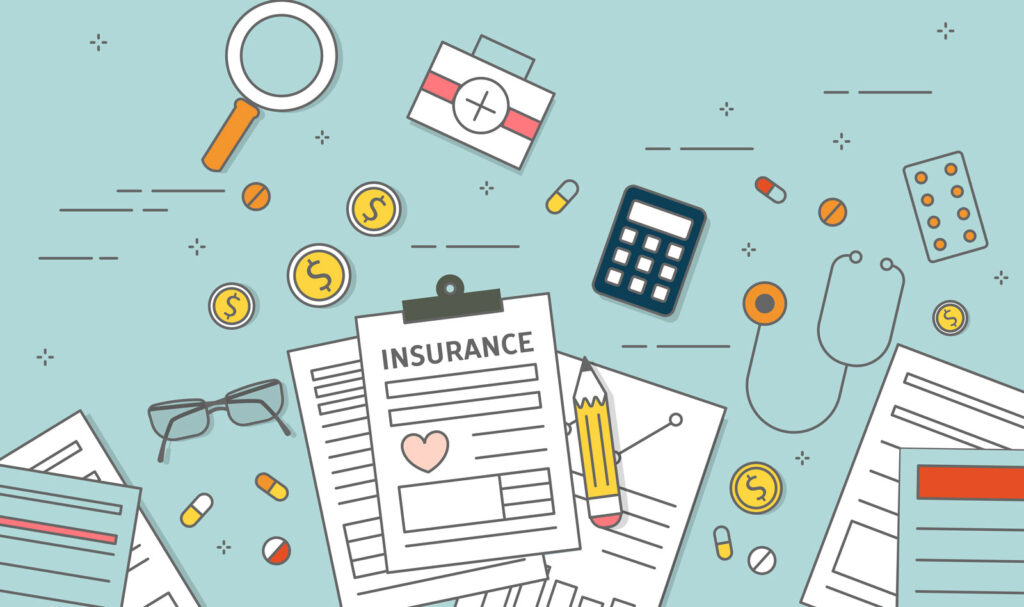Consuming medical care (or rather, paying for it) is a mystery of modern life.
You don’t know what something is going to cost up front, neither can the medical care provider provide an estimate. Even so, it’s uncertain what you’ll get billed after insurance discounts, co-pays, and deductibles; from multiple providers, up to six months after the fact.
Most people who have worked for medium-sized to larger employers simply purchase whatever group health plan is offered. Or maybe there is a standard plan and an optional high deductible health plan, which costs less in monthly premiums, but the patient pays more for services provided. Relatively healthy people can often come out ahead, building up a Health Savings Account (HSA) to pay out of pocket expenses.
Ready for ‘concierge care?’
Then there are also Health Care Sharing Plans, which are not technically insurance, but spread risk across its membership. Sort of a co-op with monthly subscription payments.
Smart people can get confused real fast, but options exist for savvy consumers to combine payment and coverage options.
Some people don’t want to mess with it, and would rather avoid uncertainty, so feel a sense of security paying more up front for their employer’s standard PPO plan.
Some doctor office visits are better than others. Many patients may not find their primary care annual checkups very impressive, as the tendency in the industry is for maximum efficiency. That means patients wait a while, talk mostly to a nurse performing a data-gathering survey, then a doctor swoops in, confirms chart data, clarifies some outliers, then after five minutes has one foot out the door and maybe prescribes some blood work or other tests. Sound familiar?
Heather Hargrove of Liberty Family Medicine describes Direct Primary Care, a service model innovation which turns this on its head. It’s sometimes marketed as “concierge care.”
Typically, this is a monthly subscription which buys you access to a physician and their office resources. The doctor has recurring revenue ongoing, so can afford to carry smaller patient load and therefore under-book daily appointments, to be able to fit in urgent patient needs on short notice. The patient can email or text their doctor directly, something most people would find unimaginable, unless they otherwise knew the doctor personally.
New habits for a new routine
Still, most health discussions revolve around cures for fixing ailments. Everybody knows that a clean diet of fresh fruits and vegetables, lean meat, and drinking water is good for a body.
That, coupled with a regular exercise regimen, as modern work has largely filtered out physical activity for most people. My cousin is a full-time family farmer, and he admits his job is mostly tractor driver and mechanic.
It seems many fit people who are busy make a recurring, set appointment for exercise. Home gym at 6 a.m. six days a week for 45 minutes. Every day after work run three miles out the trail and back. Each Saturday afternoon bike a 20–25-mile loop. Stretching and sit ups a half hour before bed every night. Whatever floats your boat, but make it a routine.
One fellow who’s a dedicated early bird on the home gym says he can feel it missing when traveling, or life otherwise disrupts this habit. The successful find it enjoyable, they look forward to the pleasure of huffing and puffing with muscle fatigue — like a runner’s high.

Wearables monitor … and track
For the motivated, or those less so, there are more tools available these days to track one’s health between doctor checkups. One example is wearable health monitors, often worn on the wrist 24/7.
A work colleague got an Amazon Halo and is obsessed. It tracks real time vitals like pulse, blood pressure, calories burned, blood oxygen levels.
It counts steps throughout the day, and records minutes at elevated heartbeat during exercise sessions. It somehow records sleep patterns, with duration of deep sleep and R.E.M. (when dreams are most prevalent). On-demand mobile dashboards serve as mission control of one’s inner workings.
Some devices can even register the tone of one’s voice throughout the day, as an indicator of stress. (Hello, Big Brother.)
There are rankings compared to other users in one’s age group — being in a top percentile for the week can be an extra motivator. One user describes it as “a game I play with myself.” Still, there are worse vices then going OCD over personal health stats.
Just loosen your belt?
There is a trend by some health plans to incentivize employees to record and provide such health metrics to get premium discounts, as healthy habits tend to lower plan expenses. Call it the gamification of personal health data.
I talked to someone who had a heart attack once, so now preaches to pay attention to chest pain in the night. With essentially having a hospital-like vital sign monitor on all the time, alerts from a smart watch might save lives.
Yours Truly may be above average fitness-wise, but my strategy is totally analog. No fiddling with peak heart rate targets or online step competitions. If I don’t accomplish at least two or three days per week of bike commuting to work, then the response is to refocus for next week. Or if pants start feeling snug around the waist, it’s time to refrain from the snacks for a while.
In this modern society, it can be counter-cultural to watch one’s health. For those with the desire, healthy habits are possible, and more tools are available for those who desire to get serious and take a proactive business-like management of their own well-being.

Steve Spellman is a lifelong Columbia-area resident and political observer.










